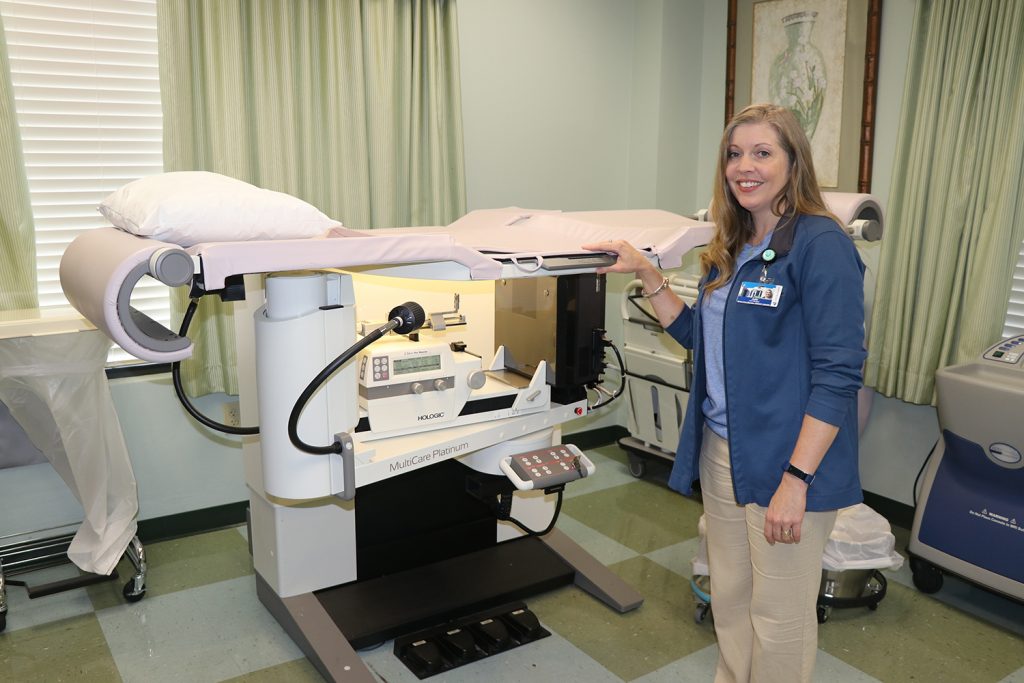By Claire Aiello, Vice President, Marketing & Communications
There has been debate in recent years on how often women should get mammograms, and at what age they should start. Julie McCain is the Breast Care Manager for Crestwood Women’s Center, and she says this pretty clearly: every year, starting at age 40, and earlier if your doctor recommends it based on your health history.
McCain has worked at Crestwood for 12 years, and has been in breast imaging for 20 years altogether. Her first job was at Hartselle Medical Center when the process was analog and involved film screen.
“Everyone remembers you’d take the image, and then you’d have to go process them, and hope they would turn out, and the patient would have to wait and see if they turn out, and if a processor eats the film and all those things, you’d have to start over,” McCain recalled. “There were a lot of details that would have to be done to make sure we could get a good quality image.”
Technology has rapidly changed, and answers come much more quickly now. With 3D mammography imaging, patients can get results within minutes if needed, and then have additional tests on the same day depending on what a mammogram reveals.
“If we have a patient who is presenting a breast concern, now the radiologist looks at their image immediately, and can recommend ‘ok, I want you to do more mammogram pictures, or I want you to do an ultrasound.’ All of that can happen within the same visit,” McCain explained. “And patients who need a biopsy – most of the time, we do those that same day, so that’s another huge advantage.”
She and her team work very hard to help reduce patient anxiety and worry, because not every visit is routine.
“When we have to tell that patient ‘we see something we’re concerned about’ – that moment changes everything, and we know that,” McCain said. “Most of us have been there – we either have some story related to breast biopsy with ourselves, or our families, so we know those sleepless nights, and we try to limit those as much as possible for that reason, because at that point it is personal.”
McCain urges her team to rotate and take care of different duties. She said everyone does a little bit of everything, including patient care, but also helping with marketing, talking with churches and community groups to share the importance of annual screenings.
‘Continuity of care’ is a term you often hear around the office. Colette Tronti, a mammographer, said it is one of the reasons she likes her job. “With X-rays, you take the image, say it’s of a broken finger, and then you never see the person again,” Tronti explained. “With mammography, we get to see them every single year. We get to be with them through different things. You don’t get that continuity of care with any other modality.”
This article is published in the October 2019 issue of Initiatives magazine.





